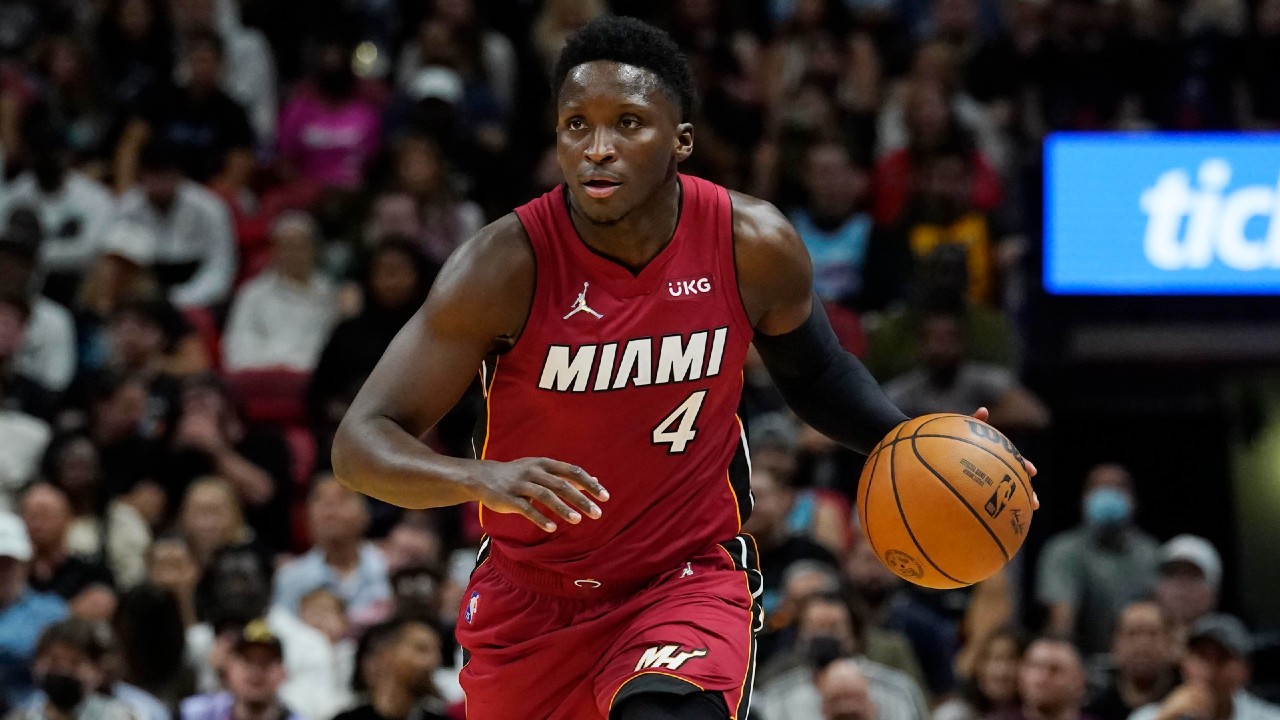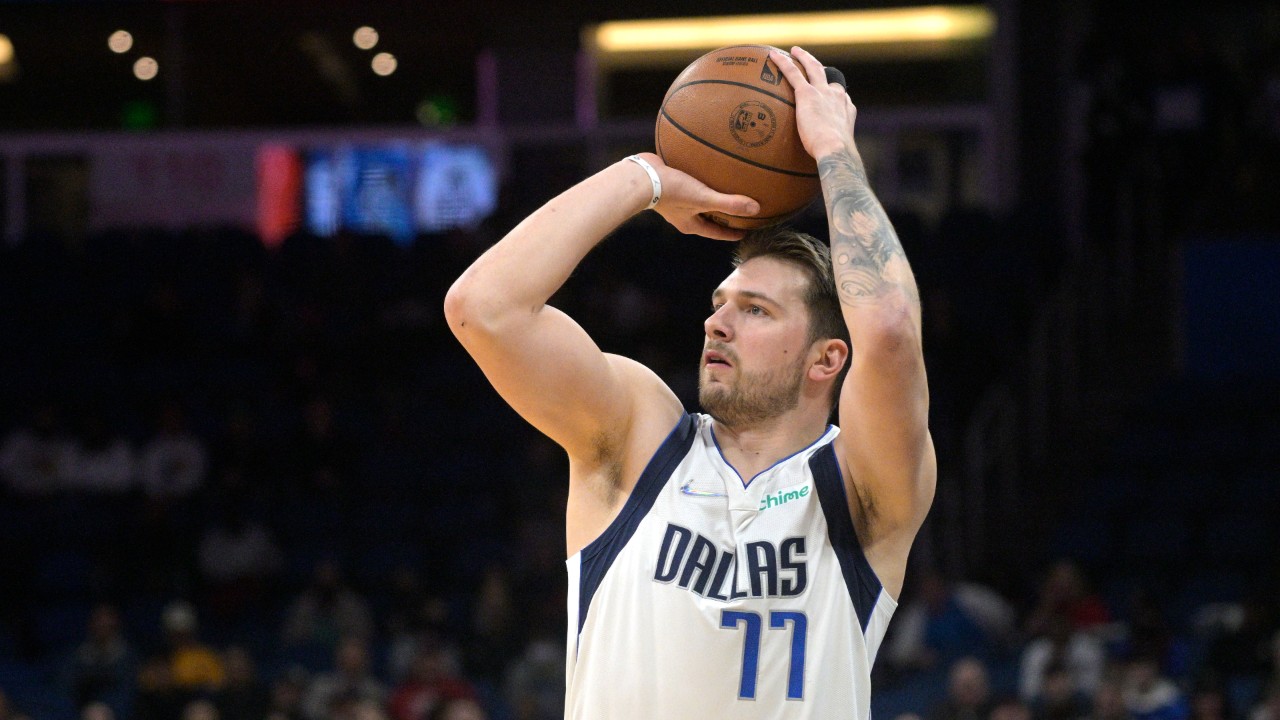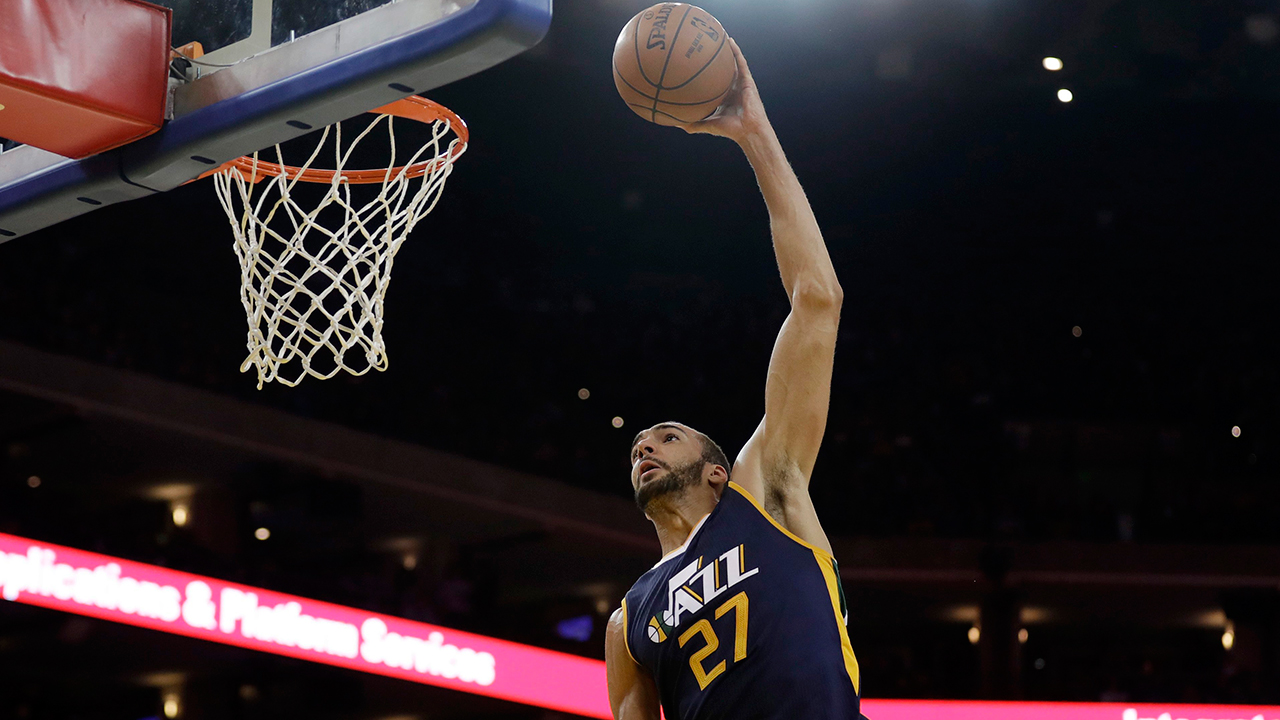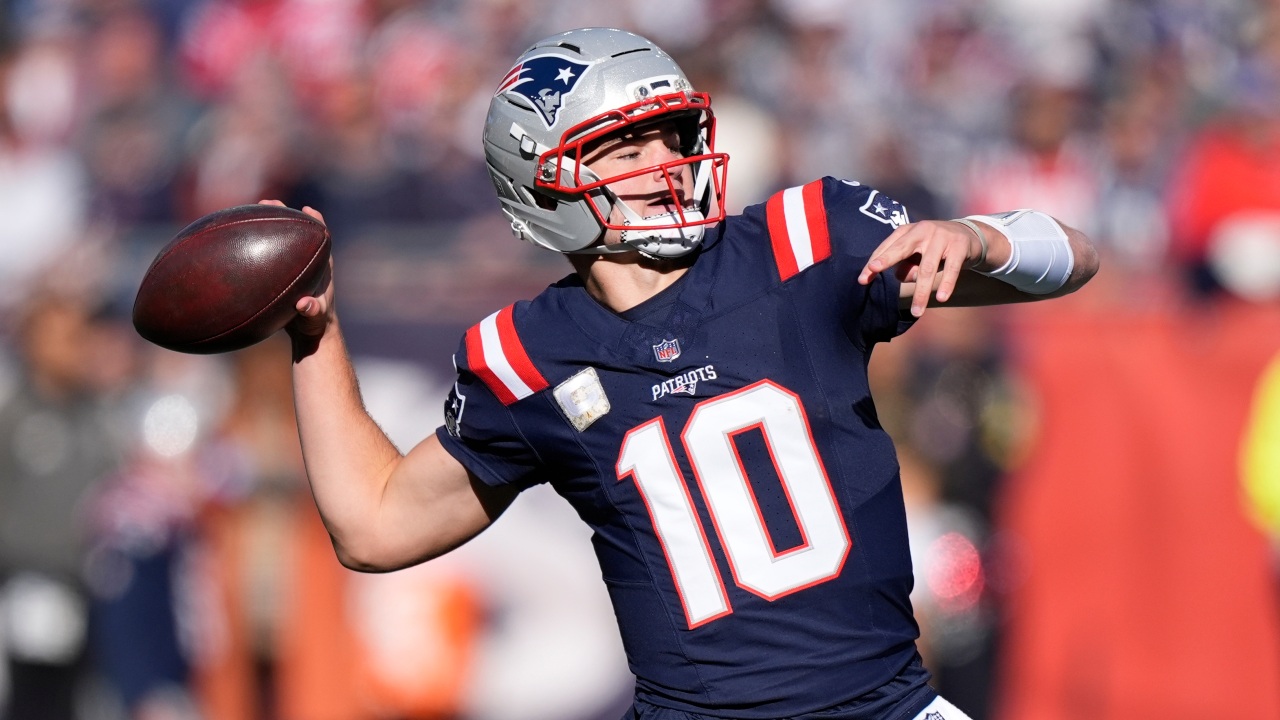
This week, the league’s executives and any player agent of note are in Chicago for the NBA draft combine, which also serves as a meeting ground where teams start shopping in earnest to see what’s available to improve themselves heading into next season, both via free agency and trade. But the Toronto Raptors‘ plan for how to approach this moment started long before.
Less than 24 hours had passed since the team had been eliminated from the NBA playoffs, but head coach Nick Nurse already had a wish list for how they could improve. As a 48-win team with a young roster featuring the reigning rookie-of-the-year the Raptors have a strong base to build on, but they had — and have — clear needs.
“You can’t go into a season with eight or nine guys anymore, you can’t,” Nurse said at his end-of-season media availability. “Your ninth, 10th, 11th, 12th, 13th, 14th guys better be able to go out there and play and not just look like it once and while. We’ve gotta get some depth to keep up with the times.”
Anything else?
“We could probably use some catch-and-shoot,” he said.
And while Nurse remains committed to the idea of a roster that is heavy with switchy, six-foot-nine (ish) wing players — in fact, he wants more — having a big man who can be a rim threat on both ends of the floor would be nice.
“That would help too,” he said. “I think that probably lifts a little bit of pressure for guys like Fred [VanVleet] and Gary [Trent Jr.], OG [Anunoby], those guys that could get more open corner looks because of the pressure being put on the rim on the weak side.”
So quality depth, better shooting and some mobile size are on the wish list.
The question is what steps the Raptors can take to add those pieces.
But first, the Raptors’ current roster situation.
Before you start pencilling in Utah Jazz defensive anchor Rudy Gobert – widely rumoured to be on the trade market this summer, along with the four years and $170 million remaining on his contract through his age 34 season — for 15 points, 12 rebounds and three blocked shots every night, there are a few parameters to keep in mind.
The Raptors have nine players under contract next season — presuming Svi Mykhailiuk picks up his player option for 2022-23 — which leaves them with six open roster spots to fill. But chances are Dalano Banton and Chris Boucher will be back, leaving four, and the sense is Thad Young will stick around too, so let’s call it three roster spots available.
They almost certainly will operate as a team that is above the salary cap but below the luxury tax threshold. What that translates into is that the primary tool the front office has to compete for potential free agents is using the mid-level exception (the ‘MLE’), which allows teams over the cap to sign a player or players for about $10.3 million and a maximum of four years. In other words, the largest single contract they can offer is four years and roughly $41 million — a nice chunk of change, but it’s not going to be enough to sign Bradley Beal, for example.
Still, the MLE is a means teams in the Raptors’ position can use to sign a decent player. It can also be divided among more than one player. The Raptors (and other teams who are over the cap but under the luxury tax threshold) can also offer players the bi-annual exception, a tool teams can use every other year to add players, paying a single player up to about $4 million over two years. They both can be divided among more than one player. Toronto can also sign players to veteran minimum deals to round out the roster.
One more thing to keep in mind: the luxury tax threshold is projected to be about $149 million. It’s unlikely the Raptors will assemble a team with a total payroll that exceeds that number unless they believe they are in position to contend for a title, which seems unlikely at this stage.
When you look at the Raptors’ roster in that context and compare what they need with what they have and what types of moves they can possibly make, you can see why Raptors vice-chairman and president Masai Ujiri is preaching patience and internal growth as their path to incremental improvement.
But relying only on internal growth isn’t an option; the Raptors don’t have enough players and need to go get some.
Here are three scenarios for the Raptors to reshape their roster over the off-season.
The Big Boom: The Raptors trade for Rudy Gobert
This is one of those deals that gets floated around, and the Raptors get connected with because they don’t have a centre and value defence. Gobert is one of the best defensive players in the world — who also happens to play centre.
Could it happen? In theory, yes.
The Raptors have all their picks available to trade (after this draft in June) and could build a package around say, Anunoby (likely with Gary Trent Jr. included) that could work financially. It would create room for Scottie Barnes to grow alongside Siakam and VanVleet, and Gobert would instantly make the Raptors a better defensive rebounding team, better at the rim and give them one of the best lob threats in the league (Gobert shot an NBA-best 71.3 per cent from the floor this season and had 233 dunks in 66 games).
Will it happen? Probably not.
Why? Because NBA trades almost never happen, and big splashy trades involving all-NBA calibre bigs in their primes happen even less. Also, acquiring Gobert would be the move the Raptors would be able to make around their core. Is a team with Siakam, Barnes, VanVleet and Gobert good enough to challenge in the East? Is trading away one of your best defenders and (if Trent Jr. were included), two of your best shooters the way to go when trying to build a team around defence and shooting?
Also, chances are the Jazz, in trading away a three-time defensive player of the year, would want something more concrete to match with Donovan Mitchell than Anunoby’s potential. Siakam would be an easier sell, but the Raptors would be adding a player that requires playmaking to function on offence by trading away — arguably — their best playmaker.
The Raptors go shopping to meet two needs at once.
The Raptors might have some open roster spots, but that doesn’t mean they should use one to address each need they have — even if they could. Only five players can play, so to get the most bang out of a nine- or 10-player rotation you need overlapping skills.
In a perfect world, the Raptors add someone who can make threes and help as a playmaker, or a big who can handle himself in the Raptors’ defensive schemes while also adding a three-point threat. In that vein there are some interesting names to watch that could add some depth to Toronto’s wing rotation.
Perhaps the most compelling free agent might be Victor Oladipo, who seems to have resurrected his career in Miami after playing just 88 games since tearing his quadriceps tendon in a game against the Raptors back in 2018-19. The two-time all-star can handle both guard spots and is the kind of active, handsy defender who would fit in well in Toronto.
The big question (beyond how interested the Raptors might actually be in a 30-year-old with a significant injury history) is would the MLE be enough for a player who was making $21 million a year prior to this season. The other issue is if Miami — who has poured a season-and-a-half of development into Oladipo — would be willing to let a player who is part of their championship-contending rotation walk when they have the ability to match or exceed any offer.
Another possibility? How about former Raptor Delon Wright? When I bumped into him around the trade deadline, the Atlanta Hawks guard made no bones about being open to returning to the Raptors. “Make it happen,” he joked.
The six-year veteran is 30 now but has been durable throughout his career and has always been comfortable coming off the bench. His nose for the ball remains impeccable, he averaged 3.7 deflections per/36 minutes (the same as Raptors leader VanVleet) for the defence agnostic Hawks this past season and has averaged two steals per/36 for his career. His assist-to-turnover ratio is better than 3:1 for his career and he’s shot 37.3 from three over the past three seasons.
He’s coming off a three-year deal for $28-milliion, so something in the MLE range seems like a plausible contract given he averaged just 18.9 minutes a game in a crowded Hawks back court. Bring him home, I say.
The Raptors go specialist hunting.
Toronto values versatile, multi-positional players who can play both ends of the floor and hey, who doesn’t? But sometimes it’s good to have someone on your roster who can do one job really well and make it easier for others to do theirs. Could that be the approach the Raptors use to address their shooting woes?
It’s an issue, given that Toronto was 14th out of 16 playoff teams in True Shooting percentage and 27th out of 30 teams in the regular season. The free agent pool isn’t particularly deep this summer, but a couple of names jump out that could fill a gap for the Raptors and could be in their price range.
Gary Harris shot 38.4 per cent from three for Orlando this past season and has improved as a playmaker and ball-handler over his career. As a bonus, the six-foot-four, 27-year-old is a pesky defender who has started 26 playoff games for his career. He’s coming off a four-year, $84-million contract so the MLE might be a come down for him, while making sure he’d be comfortable coming off the bench would be another consideration.
Another option could be Bryn Forbes, who is the anti-Raptor in that he’s a six-foot-two guard with limited utility if he’s not shooting the ball. He’s not long or switchy, but Forbes is one of the best in the world at what he’s best at: his 41.3 per cent career mark from three is seventh among active players, trailing only the Currys, Joe Harris, Desmond Bane, Luke Kennard and Klay Thompson. He played for $4.5 million this past season, so should be affordable.
An off-the-board choice? How about poking around the Miami Heat to see if Duncan Robinson might be available.
The fourth-year wing has been DNP-CD three times in the Heat’s 11 playoff games heading into the Eastern Conference Finals and played sparingly otherwise as the Heat have used Max Strus and Oladipo in his place.
But Robinson started every game for Miami in their run to the Finals two seasons ago and shot 39.7 per cent from three along the way. He had an ‘off’ year this past season, shooting just 37 per cent from three on a high volume, but the two seasons prior he knocked down 42.7 per cent of his threes on 8.4 attempts a game, which is about as good as it gets.
Robinson has four years and $74 million left on his deal. Would the Heat take Gary Trent Jr. back in a trade? The Raptors might be giving up a little defensively (though Robinson is at least a competent scheme defender, and at six-foot-eight, has good size) but they get a better shooter and cost certainty: who knows what Trent Jr. is going to be looking for in the summer of ’23 as a free agent if he has another solid or better year with the Raptors? As well, Robinson knows his role: spread the floor and cut off the ball to create space for his teammates and punish teams that over help.
The Raptors were dying for just that kind of presence against Philadelphia in the playoffs, and with Siakam, Anunoby and Barnes all comfortable putting the ball on the floor, having someone who does it only as a last resort could be a good thing.
Meanwhile, Trent Jr. wants to expand his role and prove himself as an isolation scorer, and it’s hard to see him accepting moving to the bench if that’s what the Raptors needed. In return the Heat get a growing young player in Trent Jr. on a very movable contract, his Bird Rights if they want to keep him and some salary flexibility going forward as they try to build a team around Jimmy Butler, Bam Adebayo and Kyle Lowry and their top-heavy contracts.








